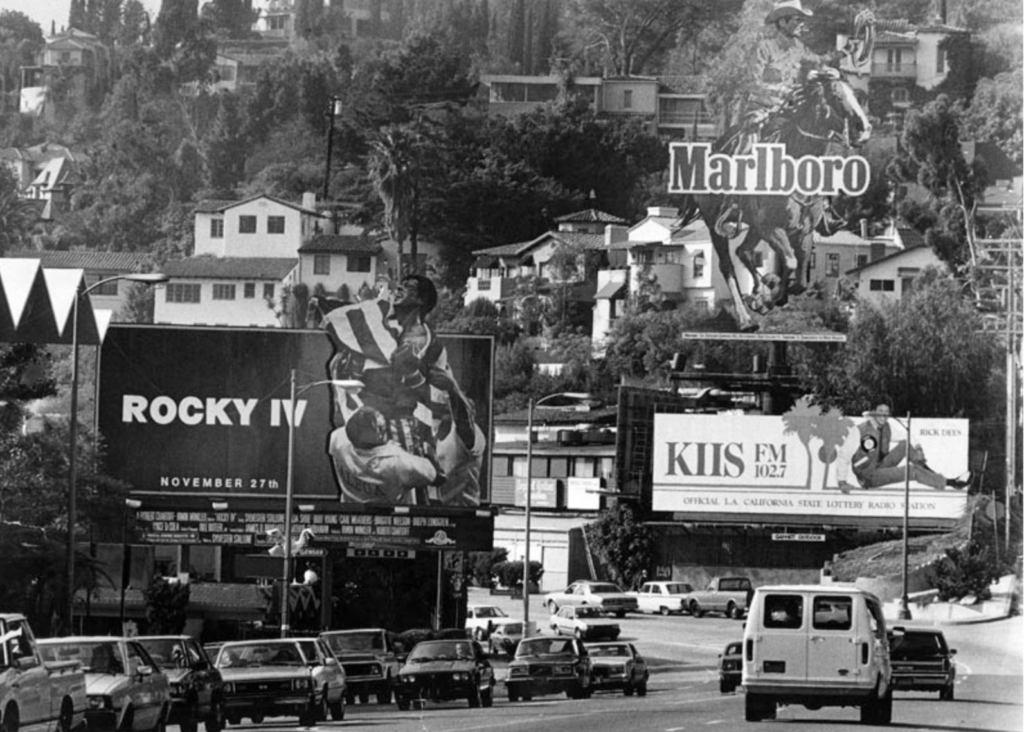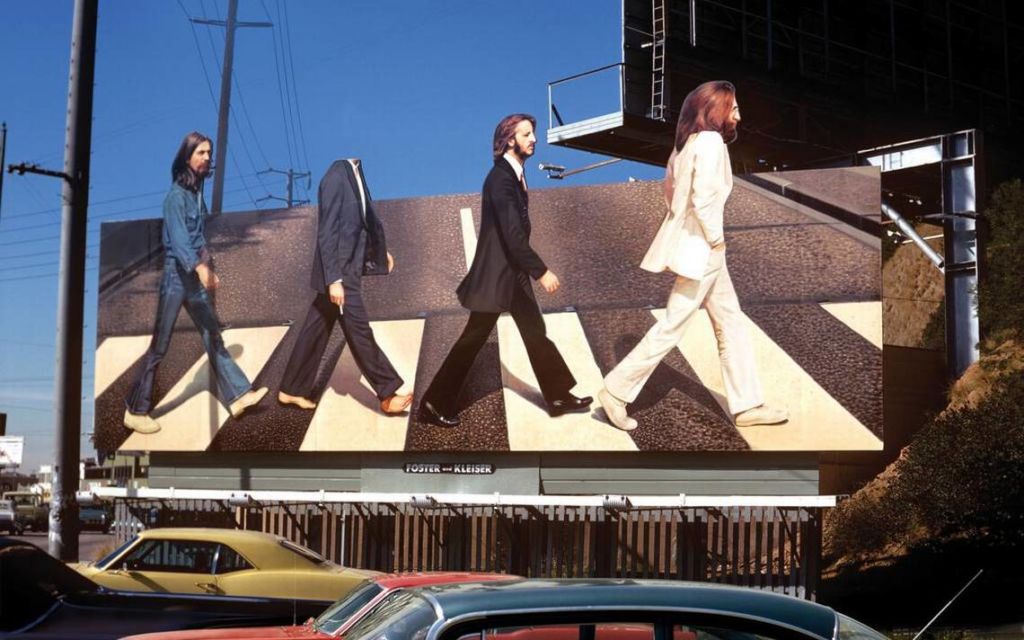The Sunset Strip’s Historic Rock ‘n’ Roll Billboards
Since the ‘60s, Sunset Boulevard has been prime ad real estate
 By Chris Epting
By Chris EptingMarch 10, 2020 — 4 Minute Read
It all started back in the 1960s when Elektra, a record label under Warner Music Group, noticed how effective billboards were along the Las Vegas Strip. It got them thinking. What better place to promote entertainment in the Los Angeles area than the Sunset Strip?
Every single day, you had a captive audience in their cars including some of the biggest players in the industry. And so Elektra began promoting The Doors with vibrant, visually arresting billboards that helped launch the band. Many other record labels followed and interestingly, the billboards were less about generating money than they were a way for the labels to prove to the artists that they believed in them—more an ego stroke than a means of selling albums. Once one band got a lavish and unique billboard, other bands began demanding them as well. Local disc jockeys cruising The Sunset Strip would also take notice. A new form of pop culture expression was born.

Back in the 1960s, there were two primary outdoor advertising companies, Pacific Outdoor and Foster and Kleiser. Both companies employed talented artists and builders. The creators would hand-paint the billboards in local warehouses, and each one took about 10 days to produce. Prices could range anywhere from $1200 to $10,000 depending on how elaborate the design of the billboard was.
The Beatles, Led Zeppelin, Frank Zappa, Humble Pie, ELO, ABBA. Band after band began pushing the creative envelope, with extensions, props, and lighting used to help create increasingly outlandish, attention-garnering billboards.
In his book, Rock ’n’ Roll Billboards of the Sunset Strip, author/photographer Robert Landau showcases the most well-known rock ‘n’ roll billboards, documenting the bigger-than-life images that remain burned into the minds of music fans from the era. As Landau told Collectors Weekly in 2015,“Because all the record companies were in LA and most of the artists were living there, they were all trying to outdo each other.”
There were billboards that lit up at night and ones that changed over time. Landau noted one billboard that first appeared as the outline of a brick wall, then began to change, (like a brick wall that changed brick by brick, to reveal the album cover of Pink Floyd’s The Wall.) Record companies spent fortunes on the billboards, which supplemented album art and built buzz for upcoming albums.

In the early 1980s, once MTV began becoming a force, the billboards along Sunset Strip became less important. Promotional money was spent more on videos and less on outdoor advertising. While the golden era of rock ’n’ roll billboards may have only lasted about 15 years, there are still plenty of examples of elaborate and effective billboards on the Strip.
Prices, of course, have changed dramatically since the mid-1960s. Today, a full-size billboard on the Strip will cost between $35,000 and $100,000 per month depending on the location and design. The price doesn’t deter film, TV, and record companies from investing in what is some of the most famous billboard real estate on the planet. One of the most well-known and expensive billboards in Los Angeles is located near the Chateau Marmont Hotel. It’s priced at $60,000 per month and Apple currently has a long-term contract. At one time, it was a billboard for the Marlboro Man.
So look up when you walk or drive The Sunset Strip today. You just never know what you may see.

About Chris Epting
Chris Epting is the author of 30 travel/history books, including James Dean Died Here (Santa Monica Press), Roadside Baseball (McGraw Hill), Hello It's Me, Dispatches From a Pop Culture Junkie (Santa Monica Press) and many others. He is also an award-winning travel writer and has contributed articles for such publications as the Los Angeles Times, Westways and Travel + Lesiure magazine, among other publications. In addition, Chris is a veteran music journalist and recently co-wrote Def Leppard's Phil Collen's memoir, Adrenalized, and the John Oates Memoir Change of Seasons. Originally from New York, Chris now lives in Huntington Beach, California with his wife and their two children.View All Content
